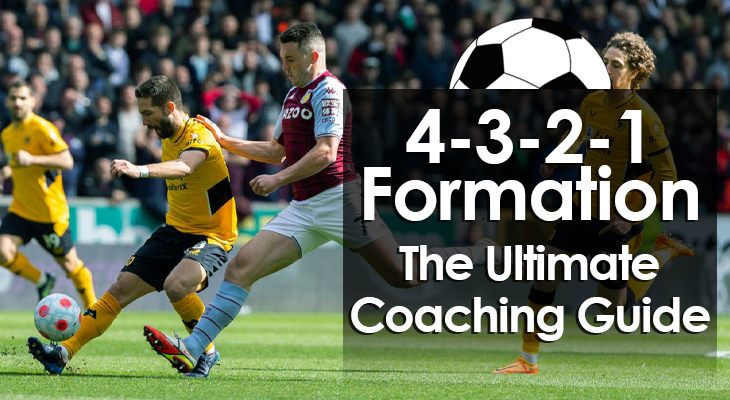4-3-2-1 Formation: The Ultimate Coaching Guide
Finding the right formation for your team can be a real challenge.
While you may have great players at your disposal, there’s no guarantee they’ll thrive in every tactical shape.
Sometimes, an unorthodox setup is the best route to success on game day.
Enter the 4-3-2-1 formation.
Made famous by legendary coach, Carlo Ancelotti, the 4-3-2-1 is set up to control the midfield and outnumber the opposition in central areas.
It’s an unusual formation as it doesn’t have much width.
However, with the right players or against a certain opposition, it can be extremely effective.
Below I'll break down what the 4-3-2-1 formation is, how teams execute it, and what your team will need to develop in order to run it successfully.
If you’re considering setting your team up in a 4-3-2-1 formation, you’ll need to understand all of its strengths and shortcomings.
What is a 4-3-2-1 Formation?
Shaped like a Christmas tree, this formation looks unusual on paper but can be highly effective in practice - especially if you have a team full of midfielders.
The narrow shape creates numerical advantages in central areas, allowing the team to advance the ball with quick one-twos and passing triangles.
However, the midfield focus means attacks from wide areas are very limited.
Also, if you’re short on creative players, this formation is weak against a low block or a three-player backline.
With so many players in the central areas, a compact backline can really stagnate the play, disrupting any meaningful attacks.
That said, with the right personnel, this is a dream setup for a possession-minded coach.
The 2010 World Cup-winning Spanish National team adopted a 4-3-2-1 formation for the entire tournament, executing this strategy to perfection.
With a squad rich in midfield talent, Spain played to their strengths and took home the biggest prize.
The team was full of highly technical players who would hold onto the ball for large periods, picking opponents apart, piece-by-piece.
In addition to being a solid formation for possession-based sides, it’s also extremely solid defensively.
The only real weaknesses are on the wings, where your fullbacks may get outnumbered.
Now that you have a general idea of the 4-3-2-1 formation, let’s take a look at the strengths and weaknesses.
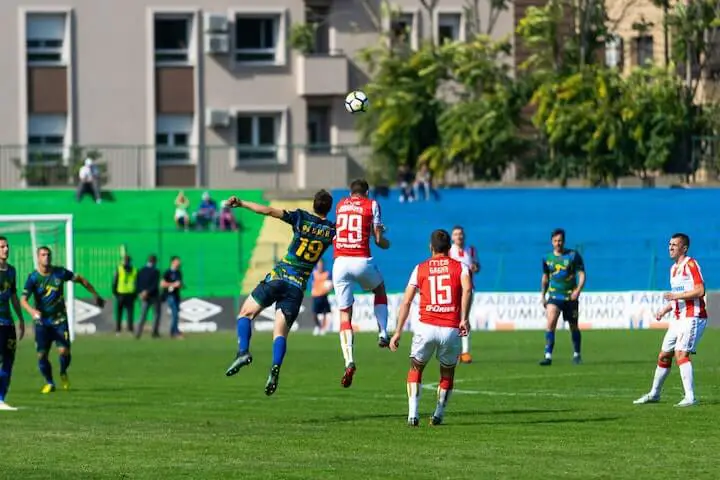
4-3-2-1 Formation Strengths
#1. Strong Core and Spine
The true strength of this formation is the central focus.
Three center midfielders shield a four-player backline, making it defensively solid and tough to break down.
In possession, your team is likely to have numerical advantages spanning the entire length of the field.
This allows them to build play methodically, creating high-percentage scoring opportunities.
#2. Ball Retention
This setup is ideal for possession-based teams.
Essentially, there will be five midfielders:
Three sitting in front of the defense and two more in attacking positions.
The attacking players are usually free to roam and create passing triangles, keeping the ball and waiting for opportunities to attack.
The three deeper midfielders usually take responsibility for dictating the play as they’re the main links between defense and attack.
Although they get forward and occasionally provide extra width, their main responsibilities are to progress the ball, recycle possession, and control the pace.
Holding the ball for long periods can tire out the opposition, leading to more scoring chances as the game progresses.
#3. Tough to Break Down
Defensively, the compact shape is extremely difficult to break down.
This is especially true with a specialist defensive midfielder (CDM).
It’s generally a good idea to play two box-to-box midfielders on either side of the DM, offering cover and support for the fullbacks.
When defending a lead, the entire team can drop back out of possession, creating a blanket defense.
#4. Limits Counterattacks
With very few gaps to exploit, this shape is counterattack resistant.
Virtually every position has defensive cover.
The midfield three are particularly important for plugging gaps and covering players who are out of position.
If one sitting midfielder goes forward, the other two can rotate and fill the space behind.
This limits counterattacking options to a fast switch of play or over-the-top pass.
#5 Attacking Fluidity
The packed midfield allows for attacking fluidity.
This means certain players are free to take initiative in the offense without having to worry about leaving gaps behind them.
Midfielders can interchange and cover for one another while remaining defensively sound.
#6. Facilitates Build-from-the-Back Approach
The goalkeeper and defenders always have passing options so there is rarely a need to resort to long balls.
With multiple banks of players occupying the core and half spaces, your team can work the ball from back to front without a problem.
Building from the back can increase a team’s possession percentage, minimizing risk over the course of a game.
If the opponent uses a high press, all midfielders can drop back to provide outlets.
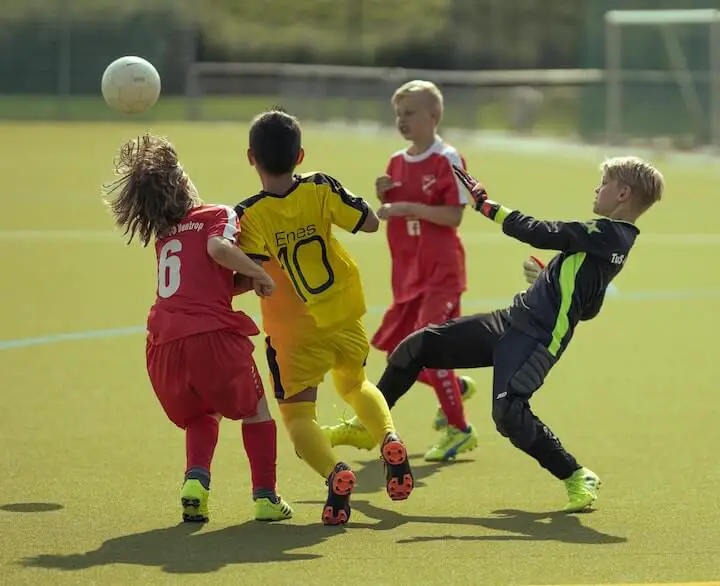
4-3-2-1 Formation Weaknesses
#1. Lack of Width
The compact midfield gives this shape central dominance by sacrificing space on the wings.
The only recognized wide players are the fullbacks, affording the opposition with opportunities to attack these channels.
Your opponents are likely to target the wings, especially when the fullbacks are out of position or caught high up the field.
#2. Possession-Based System
As a possession-based formation, the 4-3-2-1 relies on composed and technical players comfortable with keeping the ball for long periods.
If your team is short on personnel or isn’t accustomed to dominating possession, this approach can be a struggle.
#3. Requires High-Level Playmakers
This shape creates a structure for success but still depends on the playmakers to carve out scoring opportunities.
Keeping the ball is just one aspect of this system…
If your team doesn’t have the players to "unlock" a defense, they will struggle to score.
#4. Midfield Congestion
The most common problem when adapting to this formation is over-congesting the midfield.
A lack of spacing and positional awareness can clog passing lanes, making it difficult to generate any meaningful attacks.
Executing in the 4-3-2-1 comes down to the minute details.
These include midfield spacing, off-the-ball movement, and methodical build-up play.
The coach is responsible for imparting knowledge and drilling the system into the team.
This is no easy undertaking, especially at an amateur or regional level.
#5. Needs a Deep Squad
The reliance on numbers in key areas means you’ll need a deep squad to make the 4-3-2-1 work on a consistent basis.
The five midfield slots must be filled at all times.
Due to the physical demands on fullbacks, they also need to rotate regularly.
It’s also beneficial to have at least one capable backup striker.
#6. Isolated Lone Striker
With only one out-and-out attacker, this shape piles a lot of pressure on the lone striker.
The sole number 9 may find themselves isolated and outnumbered throughout a game.
When a chance comes their way, they must be ready to pull the trigger.
How to Play the 4-3-2-1 Formation
None of the individual positions in a 4-3-2-1 formation are overly nuanced.
However, executing an efficient strategy in this central-focused shape can be a challenge.
So, let’s explore the key factors in playing in the 4-3-2-1.
4-3-2-1 Formation Setup
The 4-3-2-1 formation sets out with four core banks:
Flat-back four with two center backs and two fullbacks
Three center midfielders - usually with one CDM and two box-to-box
Two center attacking midfielders (CAMs)
Lone strikers
Defensively, it’s easy to see why the Christmas tree is effective.
However, effective offense requires good spacing, strategy, and technical savviness.
Attacking in the 4-3-2-1 Formation
As discussed, the middle third of a 4-3-2-1 formation can get congested if players don’t fully understand their roles or get dragged out of position.
Therefore, all players must be aware of their surroundings and know precisely how their system works.
Much of the specific tactics in this formation come from hard work on the training ground.
Here are three important areas to focus on to help your team attack with fluidity in a 4-3-2-1.
1. Play Through the CAMs
The CAMs are the focal point of the Christmas tree’s attack.
They’re given creative freedom to find gaps and make chances in the final third.
CAMs do most of their damage between the lines (space between the midfield and backline).
They can affect the game centrally or, if the space is available on the wings, they should dictate the attack from there.
Two CAMs with three midfielders behind them ensure there are always avenues into the final third.
2. Use Attacking Fullbacks
Just because this formation sets up without wingers, you shouldn’t disregard the flanks entirely.
Attacking fullbacks can provide the much-needed width in your team’s offense.
Attack-minded fullbacks not only give you additional points of attack, but they also stretch the opposition’s defense, opening more space in the center.
If your team is dominating possession, the fullbacks can often afford to stay high up the field for long periods.
3. Allow Midfielders to Drift Wide in Possession
Another tactic for utilizing the space is to allow the midfield trio to spread and drift wide when the team is in possession.
This is particularly important when the ball is with the CAMs or striker.
The stretched positioning of the trio gives the attackers passing outlets if they want to recycle the possession or switch the point of attack.
Furthermore, they’re in position to cover the fullbacks if the opposition springs on the counter.
Defending in the 4-3-2-1 Formation
If you’re a cautious coach that likes to set up your team with a defensive focus, you’ll really enjoy the 4-3-2-1.
Here are three tips for planting rock-solid roots in your Christmas tree.
1. Maintain a Compact Back Four in Defense
While your fullbacks should join attacks and get forward when your team has the ball, they mustn’t ignore their defensive duties.
When your team is out of possession, the back four should stay compact.
This means that the fullback on either side tucks in from the sideline and stands in a much narrower position.
If the ball goes wide, the fullback can step out and engage the attacker while the rest of the team shifts across the field into position.
2. Press High
Another great defensive strategy in a 4-3-2-1 is a high press.
Firstly, the striker and CAM are perfectly positioned to pressure the ball carriers in your opponent’s defense.
If they manage to turn the ball over, your team is just one or two passes away from a chance.
However, the press bears its sweetest fruit when the midfield three steps forward.
With a swarm of players to play through, defenders may be forced into errors, putting your team on the front foot in the opponent’s half of the field.
3. Switch Shapes in Defensive Transitions
If the opposition manages to beat your high press, your players must retreat into position.
Because of its unorthodox shape, many coaches change shape when they enter into defensive phases.
This helps prevent the opposition from loading the wings and taking advantage of the spaces in wide areas.
A seamless defensive transition from the Christmas tree is a 4-4-2 or 4-4-1-1.
Simply pull one of the CAMs back and create two banks of four behind the ball.
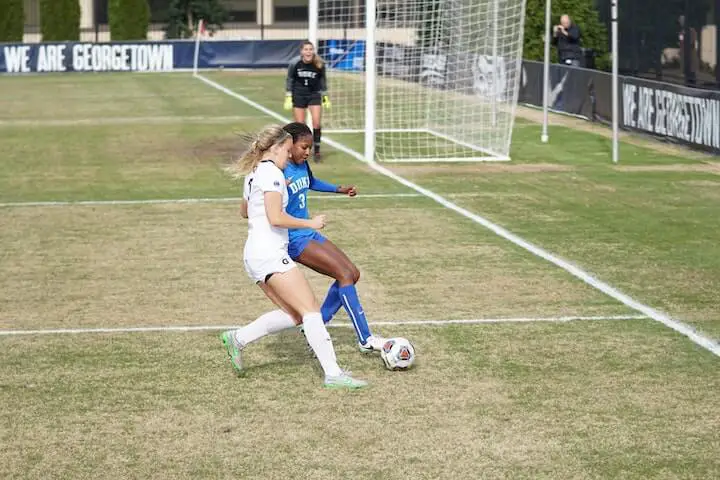
Individual Position Responsibilities
The reliance on numbers in key areas means you’ll need a deep squad to make the 4-3-2-1 work on a consistent basis.
The five midfield slots must be filled at all times.
Due to the physical demands on fullbacks, they need to rotate regularly.
It’s also beneficial to have at least one capable backup striker.
Goalkeeper
Having a goalkeeper with pinpoint distribution is extremely beneficial in this shape.
This gives the defenders a relief option under a press.
Ball-playing goalkeepers have become a priority for major teams in recent years as they can contribute significantly to a build-from-the-back approach.
Center Backs
The center back (CB) pairing is likely to see a lot of the ball in a 4-3-2-1.
While they don’t need to worry about playing extravagant line-breaking passes, both CBs should be competent in possession.
It’s also beneficial for partners to have different types of qualities.
For example, Spain’s World Cup-winning CBs were Pique, a robust and technical defender, and Carles Puyol, a tenacious ball-winner.
These diverse styles complemented each other, leading to Spain conceding just 0.33 goals per game (the joint fewest throughout the tournament).
Defensively, the CBs will have to contest aerial duels, clear their lines, make last-ditch tackles, and handle a range of standard defensive scenarios.
The 4-3-2-1 relies on having at least one modern ball-playing CB.
Fullbacks
Providing the only real natural width, the fullbacks are very important in defense and attack.
The right and left backs must be extremely fit, covering the entire length of the field with regularity.
Moreover, they should remain disciplined in transition or they run the risk of leaving large gaps for the opposition to counterattack.
As the only designated wide players, the fullbacks encounter frequent 1v1 battles against wingers, which can easily become 2v1 if the opposition opts for a wing-based attacking strategy.
However, cover from one of the midfield players can help relieve fullbacks of some of their defensive duties.
Defensive Midfielder
The CDM is the glue that binds the midfield trio together.
There are two main schools of thought surrounding this role:
(1) Deploy a combative enforcer to sit in front of the defense and break up attacks.
Yet still, this type of player will need technical midfielders alongside them to take responsibility for ball progression and retention.
Generally, box-to-box style players are preferred as their work rate and well-rounded skill set provide balance to the side.
(2) Use a deep-lying playmaker to dictate the tempo and set up the offensive strategy.
In this instance, you'll need a box-to-box midfielder on either side of the DM for defensive work and attacking support.
Left and Right-Sided Center Midfielders
The left and right center midfielders (CMs) have two primary responsibilities:
(1) Progress the ball into the attacking third.
(2) Provide defensive cover on their designated side.
Much of the team’s attacking fluidity comes down to the efficiency of the midfield trio.
The CMs must not only focus on retaining possession but also on the ability to receive the ball in traffic, turn, and play searching forward passes.
Quick thinkers and good dribblers are effective in these positions as they have the necessary skill set to work out of dangerous situations.
Defensively, CMs should be positionally aware and capable of sniffing out threats both centrally and along the wings.
They're the main support for fullbacks, especially when the opposition doubles up in wide areas.
As mentioned, box-to-box style midfielders are often the preferred player profiles for these roles.
Gavi (Barcelona), İlkay Gündoğan (Manchester City), and Alexis Mac Allister (Brighton and Hove Albion) are excellent examples of modern-day box-to-box midfielders.
Attacking Midfielders
The attacking midfielders (CAMs) are the most fluid players within the Christmas tree.
Since they're responsible for creating chances and setting up attacks, they must have a certain degree of freedom.
Legendary midfield partners, like Xavi and Iniesta, worked closely together, feeding off each other’s intuition and technical skill to break through defensive lines as a duo.
However, this isn’t the only way to operate as a CAM.
Since the 4-3-2-1 shape narrows at the top, they have the entire width of the field to find spaces to exploit.
If the opposition uses a single defensive pivot, CAMs can occupy slightly wider positions, forcing openings from either side.
Striker
The single striker usually plays off the deepest-lying defender.
Doing so broadens the gap between the opposition’s midfield and backline.
This also opens space for the attacking midfielders to exploit and create chances.
While the striker can look to get involved in build-up play, dropping deep too often can clog central areas and limit attacking options.
A well-rounded number 9, like Robert Lewandowski, is the ultimate addition -- possessing power, pace, and elite-level finishing.
A target-man archetype can also enjoy success at the tip of the Christmas tree, offering the physicality that may be lacking in other areas.
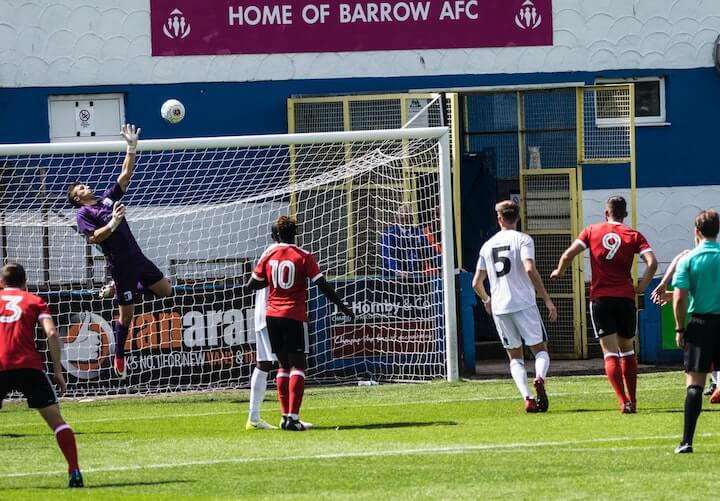
How to Beat a 4-3-2-1 Formation
If full flow, the 4-3-2-1 formation is a hard puzzle to solve.
However, there are solutions to every soccer formation.
If you’re preparing to face a team in a 4-3-2-1, consider the following strategies.
1. Avoid the High Press
While most modern teams utilize a high press, this can be very costly against the Christmas tree.
Simply put, there are too many passing options to block off, putting unnecessary pressure on your forwards.
Moreover, if your opponents manage to break the press, you’ll likely be outnumbered through the rest of the field.
So, if you turn the ball over, instruct your team to track back and assume their defensive positions.
2. Crowd the Midfield
The core weakness of a 4-3-2-1 is overcrowding the central areas.
You can effectively disrupt the effectiveness of your opponent’s attack by packing the midfield and making the game scrappy.
This can force midfielders into mistakes, opening up opportunities for your forwards to exploit.
The 3-5-2 is an effective formation against a 4-3-2-1.
It offers defensive stability with a back three, width through the wingbacks, and central dominance with the trio of midfielders.
3. Pin Back the Fullbacks
As you know by now, the 4-3-2-1 formation can be hard to contain.
In saying that, the fullbacks are often the difference makers, especially late in the game.
So, while it’s important to have a central presence, you’ll need width if you want to create chances consistently against this formation.
By pinning the fullbacks back with wingers, you limit the attacking options of your opponent.
Moreover, it puts your wingers in 1v1 situations, helping you create chances of your own.
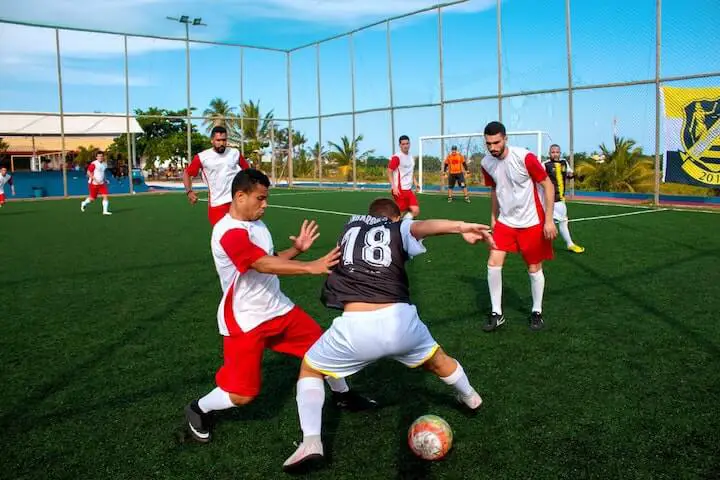
Conclusion
The 4-3-2-1 formation is a specialized shape, limited to teams with highly talented midfielders and a willingness to put in the hard yards on the training field.
As a coach, you’ll need a long preseason camp to have your team firing in the Christmas tree once the competitive season begins.
However, if you’re an ambitious coach with lofty goals, this is a proven strategy, effective in both attack and defense

